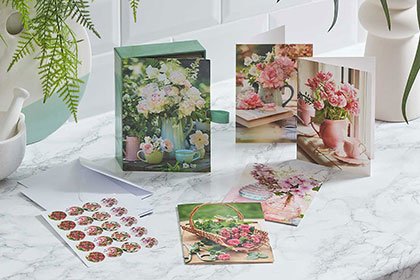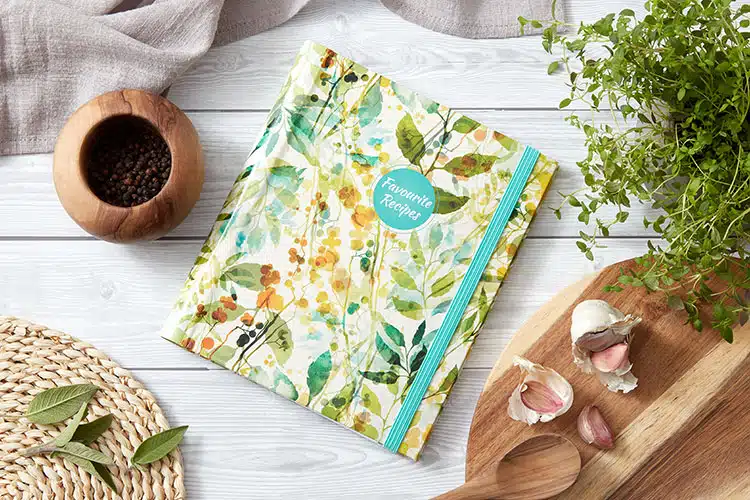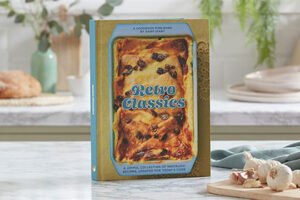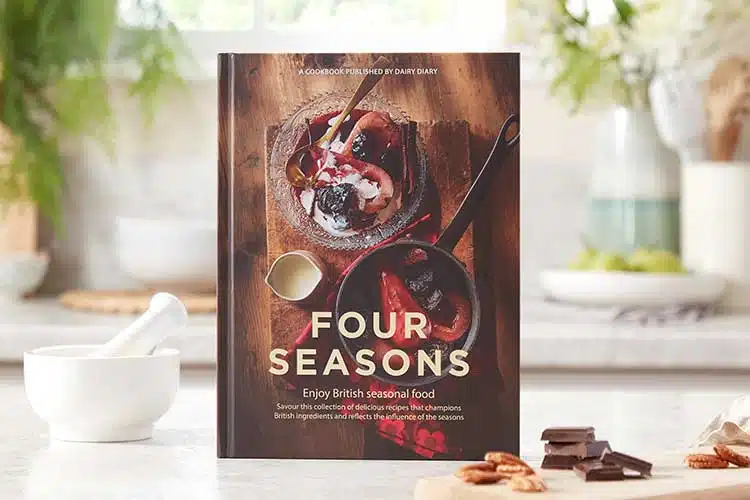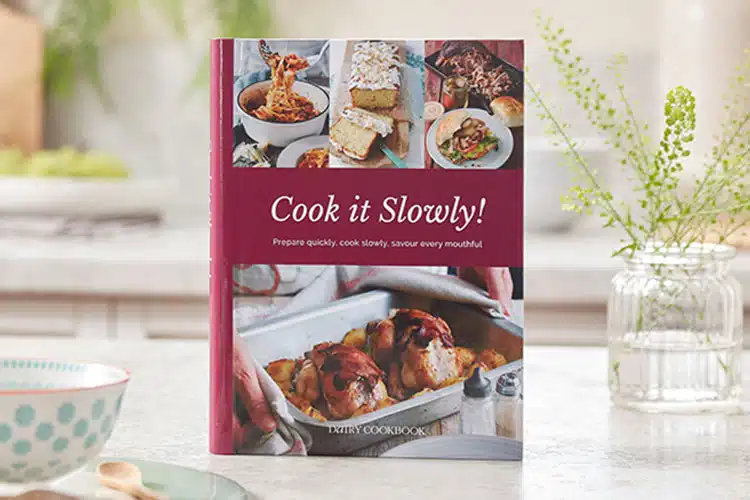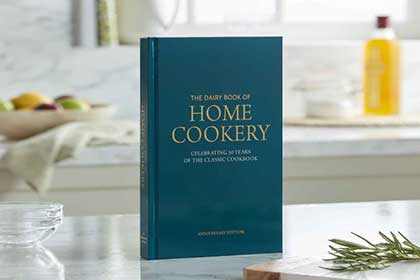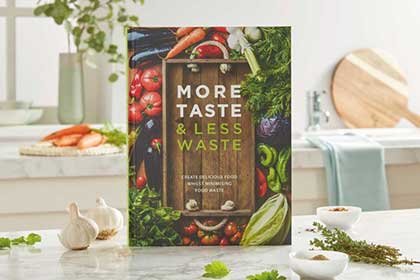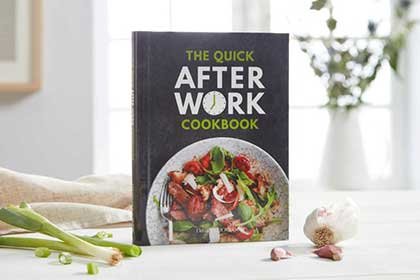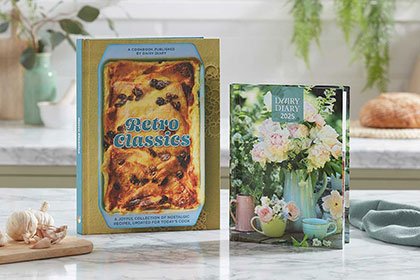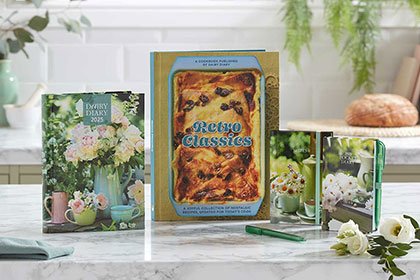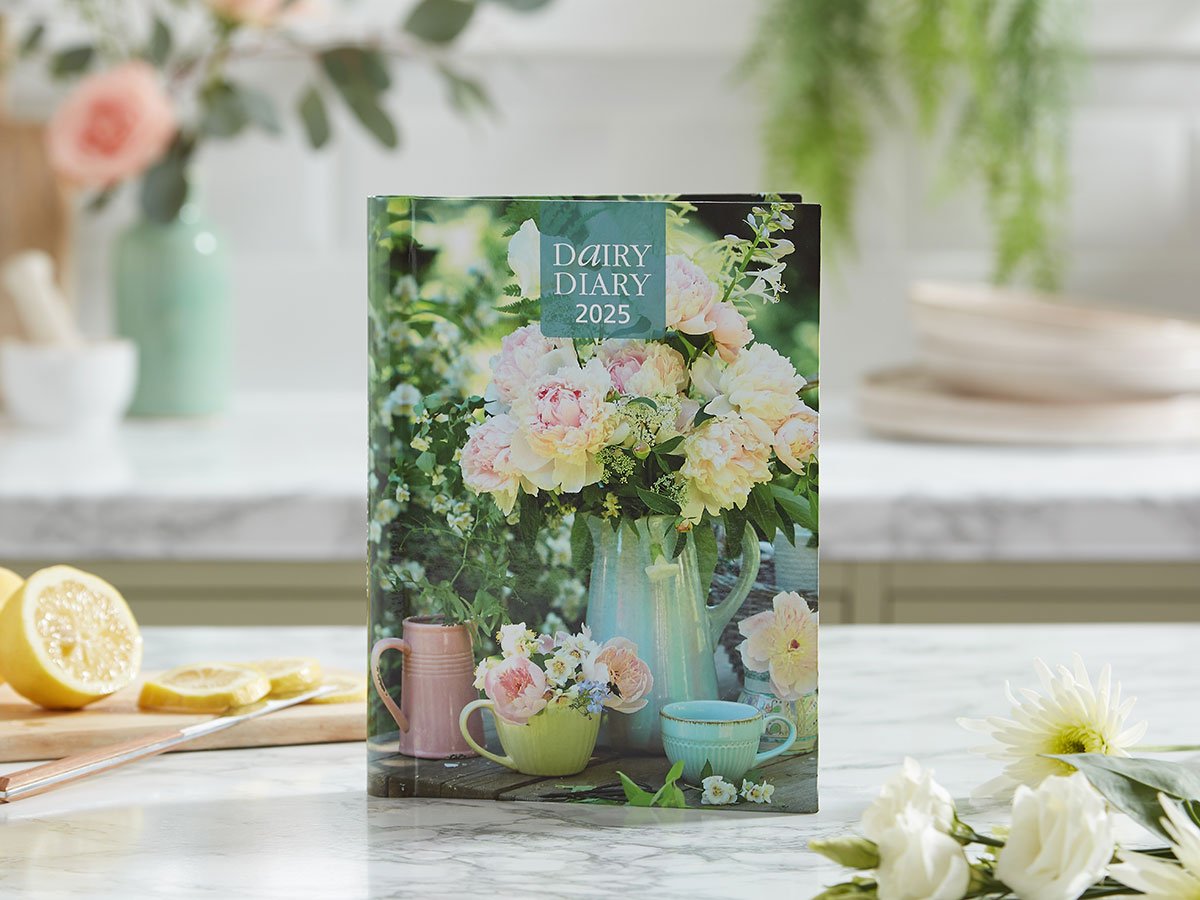The Dairy Diary guide to stain removal
What do you think is the most popular feature in the Dairy Diary?
Apart from the dates and the recipes, research shows that it’s stain removal! This may not be the most exhilarating page but I have heard many many people regaling tales of this vital resource saving clothes and carpets. Red wine and candle wax seem to be the worst culprits!
So, for those of you who don’t
have your Dairy Diary to hand
(why not??!) here is the definitive
guide to stain removal.
The most important factor in attacking stains is to act swiftly. The newer the stain, whether greasy or non- greasy, or a combination of the two, the easier it will be to remove without damage.
PERSONAL
Blood: Soak in biological detergent and cold water, or cold water with salt added, and wash in heavy-duty biological detergent. Or try rubbing a mixture of cornflour and cold water into the stain, leaving to dry and brushing off.
Collar and cuff dirt: Apply liquid biological detergent directly with an old toothbrush. Wash as usual.
Deodorant: Sponge with a hydrogen peroxide solution (see green box below); apply heavy-duty liquid detergent to the area; wash.
Perspiration: Dab with white vinegar solution (see green box below); leave for 5 minutes. Soak and wash in biological detergent.
Urine and vomit: Soak in biological detergent and cold water, and wash in heavy-duty biological detergent.
FOODSTUFFS
Egg, milk and gravy: Soak in biological detergent and cold water, and wash in heavy-duty biological detergent.
Chewing gum: Freeze to make the gum brittle, using an ice cube inside a plastic bag; scrape it off, dab with methylated spirits (see green box below) and wash as usual.
Chocolate: Apply biological liquid detergent to the area; wash in heavy-duty detergent (containing bleach). On white items, soak in hydrogen peroxide solution and wash. Or soak in milk and wash in washing-up liquid; dab any remaining stain with white vinegar, leave and wash as usual. Also good for coffee marks.
Oil/salad dressings: Sprinkle with cornflour to absorb grease, brush off, soak with washing-up liquid and then wash as normal.
BEVERAGES
Tea, coffee, soft drinks: Soak in cool water, use a pre-wash treatment and wash in heavy- duty detergent (with bleach). Or use a hydrogen peroxide solution before washing.
Red wine: Mop up excess liquid and treat as for oil. Or cover stain with salt and leave for 30 minutes. Sponge with a warm solution of biological detergent (with bleach), rinse with cold water and wash as normal. If the stain has dried, treat as for blood. On upholstery and carpets, blot with white kitchen paper. If it cannot be rinsed, spray with soda water, or white wine, mop with kitchen paper.
White wine: Rinse with plenty of warm water, or treat as tea.
GREASE, GLUE, WAX, OIL AND TAR
Oil, fat, grease and tar: Dab the area with eucalyptus oil; wash in water as hot as the fabric allows.
Glue: Try to remove glue before it sets; apply methylated spirits for natural fabrics, or lighter fluid for synthetic fabrics.
Wax crayons, cosmetics and shoe polish: Treat with white spirit to remove the wax stain. Apply a pre-wash treatment and wash in heavy- duty detergent (with bleach).
MISCELLANEOUS
Grass and mud: Dab on methylated spirits and rinse off with warm soapy water.
Apply a pre-wash treatment and then wash in heavy-duty detergent (with bleach). For a new stain, try soaking in white vinegar, or squeeze on some lemon juice.
Ink, ballpoint and felt tip: Dab stain with methylated spirits, and then wash. For washable ink, soak in milk before laundering.
Mildew: Bleach white fabrics, or soak, then wash in heavy-duty detergent (with bleach).
Nail varnish: Mop up liquid, then with stain side facing down on kitchen paper, flush with
nail polish remover (this is quite strong, and should not be used on some man-made fabrics – be sure to test first). Use methylated spirits to remove remaining nail-varnish colour.
Rust: Cover with salt, squeeze lemon juice over the salt and leave for about 1 hour; wash.
SAFETY NOTE
Some of the cleaning agents you will need for stain removal contain chemicals that are poisonous or flammable, so always read the label carefully and store them away from children. For safety, work in a well- ventilated area.
WHAT TO DO
Remove any solids with a blunt knife, and blot liquids with white kitchen paper.
Apply stain remover to a small unseen area; wait 5–10 minutes. If fabric reacts, seek dry-cleaning advice. Avoid treating delicate or expensive fabrics, or those that require dry- cleaning only.
Don’t over-soak the fabric with a cleaning agent. To avoid making a ring mark, use a soft absorbent cloth to apply the cleaning agent and work in a circular motion from the outside in. Dab, rather than rub, because rubbing can damage the fabric and it can also spread the stain.
CLEANING KIT
Detergents
Biological and heavy-duty liquid detergents.
Eucalyptus oil
Available from essential oils section of major chemists.
Hydrogen peroxide
Ask your chemist for 20 volume strength. Mix 1 part to 6 parts water; soak item for 30 minutes or until the stain has cleared.
Lighter fluid
Apply neat with cotton wool.
Methylated spirits
Available from chemists. Apply with cotton-wool buds.
Pre-wash treatments
Some of these are formulated to treat a whole raft of common stains, some
are more specific. Follow the instructions on the container.
White spirit
Dab neat on to grease stains.
White vinegar
Mix 15ml vinegar to 300ml water (3 tsp to ½ pint).
Chemical treatment may damage old or worn fabric.
Always test the fabric first in an inconspicuous area. If in doubt, take a stained garment to a dry-cleaner.
USEFUL WEBSITES
www.diynot.com
www.persil.co.uk
www.stainexpert.co.uk

Head of Dairy Diary; I’m passionate about producing high quality products that our customers will cherish. I’m also a mum of three and I enjoy cooking, walking, gardening and art with my family, as well as lino printing (if I find time!)












